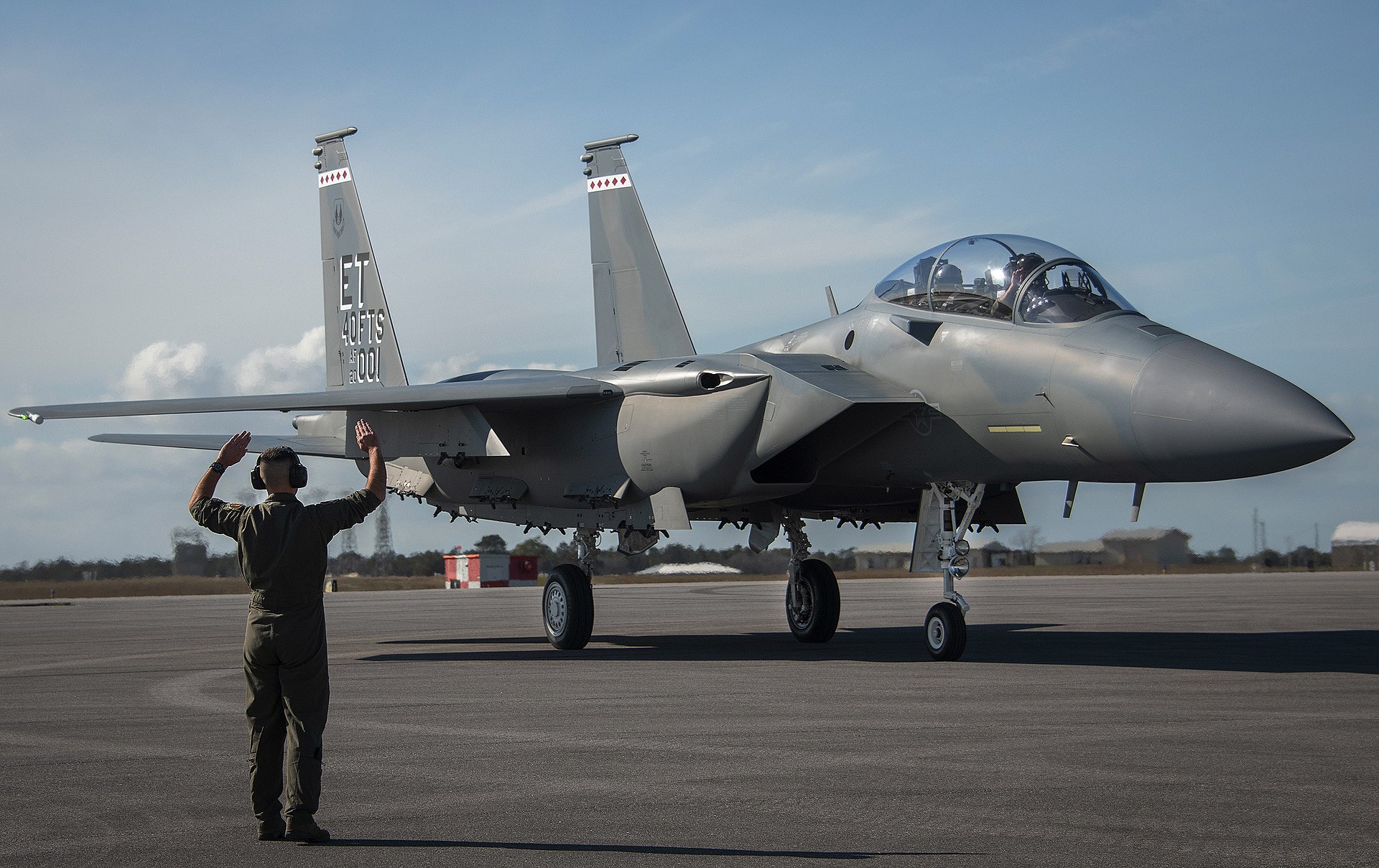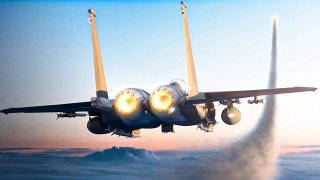The F-15EX Eagle II Fighter Jet Is Now 'Operational'
The U.S. Air Force has received its first operational F-15EX Eagle II fighter jet, signaling a new era of combat airpower. This delivery follows the previous six aircraft, which were used for operational testing. The arrival at Eglin Air Force Base in Florida was delayed by nearly a year due to production issues.
Summary and Key Points: The U.S. Air Force has received its first operational F-15EX Eagle II fighter jet, signaling a new era of combat airpower. This delivery follows the previous six aircraft, which were used for operational testing. The arrival at Eglin Air Force Base in Florida was delayed by nearly a year due to production issues.

-The Air Force plans to purchase 98 F-15EX jets, with potential increases to 122 based on Congressional proposals.
-The F-15EX, a 4.5th generation fighter, boasts speeds of Mach 2.5, can carry up to 30,000 lbs of weaponry, and features advanced sensors for enhanced combat capabilities.
Here Comes the F-15EX Eagle II: What You Need to Know
The first operational F-15EX Eagle II fighter jet is in the hands of the U.S. Air Force, marking a new era of combat airpower.
Although this is the seventh aircraft Boeing delivered to the Air Force, it is the first operational as the previous were used for operational testing.
First Operational F-15EX Eagle II
Last week, the first operational F-15EX Eagle II aircraft arrived at Eglin Air Force Base in Florida. Boeing, the manufacturing company, expects to deliver additional aircraft soon.
However, this initial delivery was delayed for almost a year after some issues with the fuselage production.
“The process change resulted in quality deficiencies, including improperly installed tubing and wires that required time-consuming rework. Lessons learned and corrective actions are being applied on the production line so that they will not be an issue moving forward on future F-15EX deliveries,” the Air Force said about the delays.
“But the complexity of the systems work relative to what we’ve done in the past was a challenge,” says Mark Sears, vice president of Boeing Fighters. “Together—the influx of new work and the systems installation challenges—created a learning curve for the team building the new forward fuselage.
Initially, the Pentagon planned for a purchase order of 144 F-15EX II aircraft. Due to cuts in the budget and other needs, currently, the Air Force plans to purchase about 98 aircraft of the type. However, recent Congressional proposals are looking to increase that number to at least 122 F-15EX Eagle II fighter jets. Congress almost always prevails over the military in such battles about purchasing or retaining weapon systems, so it is likely that the Air Force will indeed buy more F-15EX aircraft for its fleet.
“Over the last three and a half years, we’ve changed our workflow and created space for forward fuselage production, so as we move toward a rate of two a month in 2025, we’ve got the line fully streamlined,” Sears added.
The F-15EX Eagle II: Specs and Capabilities
The Air Force’s new combat aircraft is a highly capable 4.5th generation fighter jet that has the technology and potential to be competitive in a near-peer environment.
In terms of capabilities, the F-15EX Eagle II fighter jet can reach speeds of about Mach 2.5 (or almost 2,800 miles per hour) and carry up to 30,000 lbs of air-to-air and air-to-ground weapon systems. It is the aircraft’s ability to carry so many munitions that makes it particularly useful.

Indeed, depending on the mission set, the F-15EX Eagle II can carry up to 12 air-to-air missiles, including AIM-9 Sidewinder heat-seeking and AIM-120 AMRAAM radar-homing missiles, or 24 bombs and air-to-ground missiles.
The aircraft has an operational range of about 2,000 miles and a combat radius of 800 miles. Moreover, through its advanced sensors, the aircraft can be interlinked with other air, naval, and ground assets to ensure a more efficient kill chain.
As an initial matter, U.S. Air National Guard will be equipped with the new aircraft to protect the homeland.
About the Author
Stavros Atlamazoglou is a seasoned defense journalist specializing in special operations and a Hellenic Army veteran (national service with the 575th Marine Battalion and Army HQ). He holds a BA from the Johns Hopkins University and an MA from the Johns Hopkins’ School of Advanced International Studies (SAIS). His work has been featured in Business Insider, Sandboxx, and SOFREP.
All images are Creative Commons or Shutterstock.


